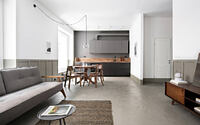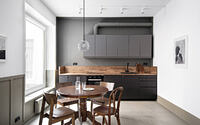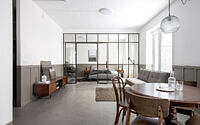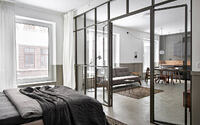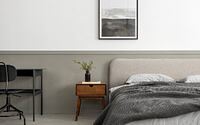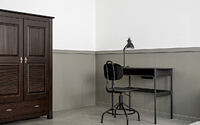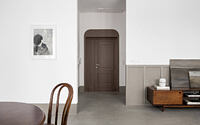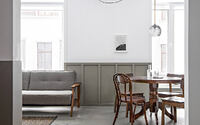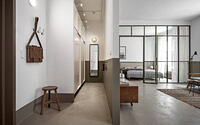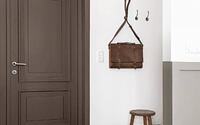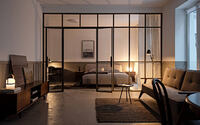Interior NG by INT2architecture
Interior NG is a midcentury modern apartment located in Saint Petersburg, Russia, redesigned in 2021 by INT2architecture.


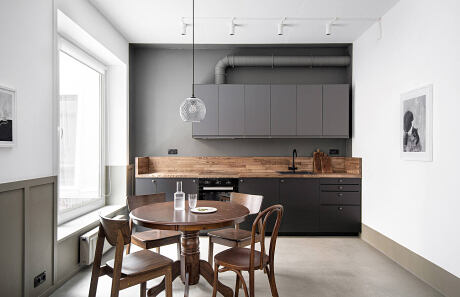
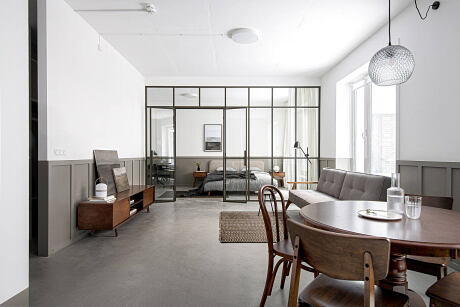
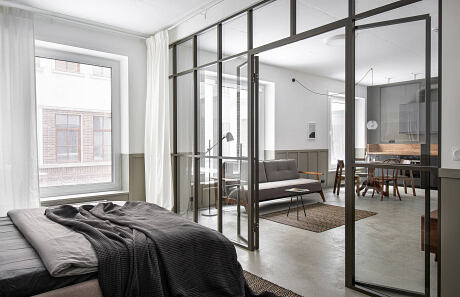
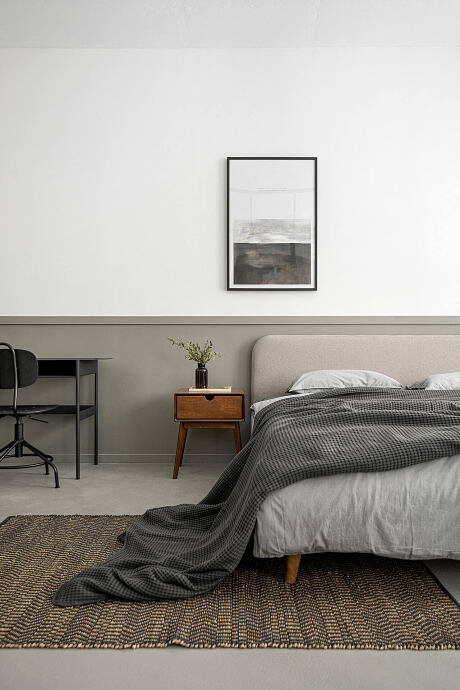
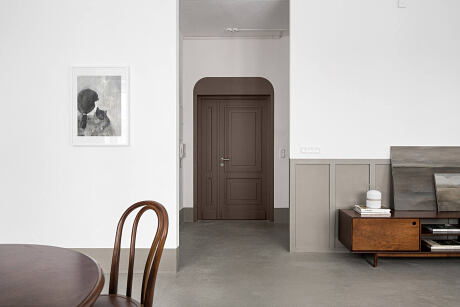

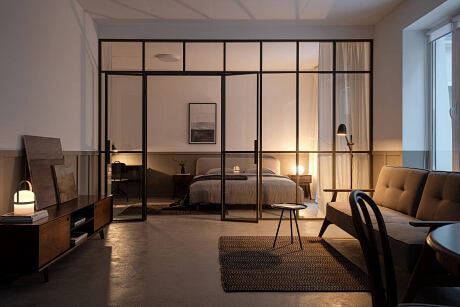
Description
Functionally apartment is divided into three zones: kitchen/living room, bedroom and hallway. Visually however it is one space with three large windows. The bedroom is separated from the living room by a glass partition thus creating an isolated place for relaxation while maintaining the overall sense of the space of the space.
The main objectives of the project were a small budget and an easily renovated finishing. The walls of the apartments were not leveled in order to save materials and costs for finishing services. They are covered with only a thin layer of paintable putty. This kind of coating is easy to restore locally, if necessary, without repainting the entire wall. The floor covering is made according to the same principle – the concrete screed is imperfectly sanded and painted with semi-gloss paint for concrete floors. The concrete ceiling was also painted without leveling. Thus, it was possible to obtain an easily recoverable shell with an industrial touch.
The bottom side of the wall is painted in floor color to get the effect of visual expansion of the space because of the color transition from horizontal surface to vertical.
It is also a reference to the classic boiserie made in a more economical way with the help of moldings and paint. These so called wall panels with a vertical rhythm in the living room and dining area transform into a long, minimalistic panel with horizontal cutoff along the floor and above the headboard. In the hallway the panels disappear altogether, the line of panels is continued by simple painting of the wall in two colors and turning into a painted high plinth in the area of the bathroom and kitchen.
Furniture and details of various stylistic trends were used in the interior: objects in mid-century style are combined with industrial and classical elements.
Photography courtesy of INT2architecture
Visit INT2architecture
- by Matt Watts